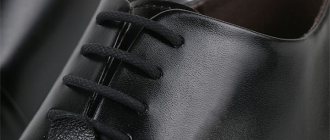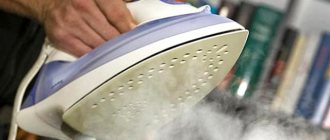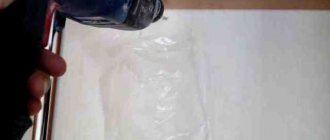If there is water on the phone screen, you need to remove all components from the device
What to do next? You need to remove all possible removable components from the phone. Usually this is the back panel, SIM card, battery, memory card, and so on. By removing these components, allow the phone to “breathe” and release any moisture trapped inside. If any parts of the smartphone are wet, dry them with a clean, dry cloth.
If you see that there is water under the phone screen, then it will be necessary to get rid of it as quickly as possible. Below we list several popular and effective methods for this.
Remove removable components from the phone
This is useful to know: What to do if a yellow spot appears on your phone screen.
Ambulance for a drowned man
For starters, don't panic. After all, if the gadget has not been in the water for long (and it is usually removed in the first seconds), the probability of saving it without the intervention of a service center is quite high. The main rule: the faster the rescue operation begins, the greater the chance of the smartphone to survive. So don’t hesitate and do the following as soon as possible:
- Remove the smartphone from the water and turn it off.
- Remove the protective cover (if equipped).
- Remove everything that is possible from the gadget: memory card, SIM card.
And if all the preparatory manipulations have been successfully completed, you can proceed directly to drying.
Using a vacuum cleaner to remove water from your phone
If you have access to a vacuum cleaner, you can use it to suck out some moisture from your phone. Vacuum the phone's battery compartment and any accessible phone ports where moisture could potentially get in. This can remove water from under your phone screen
Before starting treatment, we recommend getting rid of your own static electricity that you may have accumulated on your body. What should I do for this? For example, touching a metal table or similar structure that can release the charge.
Small vacuum cleaner for PC, powered by USB
Rice
Probably the most effective folk method, which has already been tried by many. Rice saves you even when your smartphone goes to the bottom. But this method also has a big minus - it will take a long time to wait for the “resurrection from the dead”, about a week. And all this time you will have to somehow survive without a means of communication.
So, if the smartphone gets very wet, it is buried in rice, and in the literal sense: the device should be completely covered with cereal. It is left in this state for 5-7 days.
As for the variety, there is no fundamental difference in whether brown or light, round or long-grain rice is used. This cereal is famous for its adsorbent properties and ability to draw out all excess moisture. The only question is whether the fatal oxidation of contacts will occur before this moment.
By the way, salt is also considered an analogue of rice in terms of adsorption. But, since it is a rather aggressive substance and can easily clog the connectors, it is better to opt for a more harmless rice.
A method that will help remove traces of mineral deposits or water stains
If after drying your phone the liquid left traces of mineral deposits or wet water stains, you can try cleaning these residues with 99% isopropyl alcohol. The latter leaves no traces after drying, dries quickly, and perfectly removes mineral deposits and dirt residues.
Use 99% isopropyl alcohol for cleaning
Use this method as a radical one, since there is disagreement among experts about the harmfulness of alcohol baths for a mobile device.
Before soaking, we recommend removing all removable parts from your phone and wiping them with a clean cloth dampened with 99% isopropyl alcohol. Then set these parts aside and let them dry.
What do I need to do? Find a container that allows you to completely immerse your phone. Pour in enough 99% isopropyl alcohol to completely cover your phone. Soak your phone in alcohol for 15 minutes. Then, without removing it from the liquid, shake it slightly. Wait 10-15 minutes and then shake your phone again.
Immerse your phone in alcohol
After about an hour, take a look at the alcohol your phone is in. If it looks dirty, remove the phone from the alcohol and let the gadget dry a little. Remove most of the alcohol from the phone, empty the dirty alcohol from the container, fill it with new clean isopropyl alcohol, and soak the phone in there for another hour. We do not recommend rinsing the container with water during cleaning, otherwise you will have to dry it completely before adding a second dose of alcohol.
The time it takes to immerse the phone in alcohol is several hours.
After this time has elapsed, remove the phone from the alcohol container, drain the alcohol, and wipe the outer surface of the screen with a clean, dry cloth as best as possible.
Wipe the surface of the mobile phone with a cloth
Isopropyl alcohol should dry relatively quickly. However, we recommend leaving your phone to dry for 24 hours or at least overnight.
In the case of a positive scenario, your phone will turn on and return to 100% functionality.
This will come in handy: How to clean the speaker on your smartphone.
What not to do
Every smartphone owner is interested in drying the device as quickly as possible after contact with water. But rash decisions can lead to dire consequences. Therefore, under no circumstances should you do the following at this stage:
- shake your smartphone trying to get rid of excess moisture;
- try to turn on the device after a forced shutdown;
- immediately put the device on charge;
- dry your smartphone with a hairdryer or other heating elements;
- put the device in the microwave to speed up the process even in defrost mode.
Some of these recommendations raise questions among users who have experienced water ingress problems. For example, many people don’t understand why they shouldn’t shake their smartphone to get rid of excess moisture. The fact is that when shaken, drops of liquid can not only leave the body, but also penetrate deeper.
In addition, you cannot connect devices with electric current to your smartphone. Because of this, a short circuit may even occur, during which the broken device will become only a small fraction of the damage caused.
Also, do not heat the device under any circumstances. The smartphone is not designed for temperatures above 50°C. A hairdryer can not only heat the device to critical values, but also push water particles deeper. Therefore, all precautions must be taken during the drying process. Use only proven instructions that are presented in the material.
If all else fails
Even though the material provides detailed instructions on how to restore a drowned smartphone, the likelihood of an unfavorable outcome is high. Therefore, it would be a good idea to consider an action plan in case all else fails.
Hermann
Expert in the field of digital technologies and the activities of mobile operators. I am engaged in constant monitoring of industry changes in Russia and abroad.
Ask a Question
Question to the expert
What determines the success of the operation?
From many factors. And here it will be important not only to follow all recommendations. The likelihood of recovery is directly affected by how long the smartphone was under water and whether it came into contact with a more aggressive liquid.
Does IP67 or IP68 protection help?
Not really. The protection standard is provided for fresh and cold water only. No contact with juice, coffee or salt water is implied.
What to do if the phone does not want to turn on after drying?
Make sure the device body is completely dry. Then put your smartphone on charge and wait until the coveted 100% lights up on the screen. If the device still does not start, perform a factory reset through the recovery menu by pressing one of the volume rockers and the power button.
Do I need to disassemble my smartphone if all else fails?
With the right level of skill, this will really help solve the problem. Having disassembled the smartphone, you can assess the scale of the tragedy from the traces of oxidation.
Can a smartphone be restored at a service center?
Yes, but no one can give a 100% guarantee. The service center specialists will conduct diagnostics and offer several ways to solve the problem. The battery or other hardware may need to be replaced.
Is water penetration covered under warranty?
No. Even in a situation where the characteristics of the smartphone claim protection from water.
4.6/5 — (22 votes)
Author
Hermann
Expert in the field of digital technologies and the activities of mobile operators. I am engaged in constant monitoring of industry changes in Russia and abroad.
The best method of "resuscitation"
Ideally, a charger that has been in water should be thrown away. But replacing the original charger with a Chinese counterfeit is a dubious idea: third-party devices differ in characteristics and gradually “kill” the phone’s battery. Therefore, it is worth fighting for the original and trying to “reanimate” it.
A standard charger does not have complex microcircuits inside, so in theory, being in water will not cause much damage to it. The danger lies not only in the remaining moisture, but also in oxidized contacts. If you plug in an under-dried or damaged device into the network, a short circuit will occur with all the resulting dangers. Therefore, drying the charge with a standard 2-hour drying on a battery is unacceptable. More drastic measures are needed.
We proceed like this:
- disassemble the charger housing;
- take a capacity commensurate with the device;
- place all charger elements in a bowl;
- heat 96% ethyl alcohol in a water bath to 40-50 degrees (vodka, moonshine and other alternatives are not suitable - only “pure” pharmaceutical alcohol);
- Fill the charger completely with alcohol and leave for 7-10 minutes;
- We take out the device and thoroughly blow all the elements with a vacuum cleaner;
- repeat the procedure: heat the alcohol, immerse the charger in it, remove it and vacuum it;
- Using a magnifying glass, we inspect the contacts of the device (noticing a white coating, treat the affected area with acetone);
- We dry the charge for about 30 minutes, and then we assemble the case and check it.
After washing in a washing machine, the contacts of the charger oxidize, so drying is not enough - you need to treat the “chip” with acetone.
After using alcohol, a vacuum cleaner and acetone, the device will get rid of the effects of machine washing and restore its functionality. But only a few know about this method of “resuscitation”, and the vast majority lose chargers due to incorrect actions.
Normal drying
This method is the simplest, but it is only suitable for “mild” cases. Let's say the smartphone got caught in the rain or was accidentally wetted by a stream from the shower. That is, the wetness was insignificant, and the gadget did not “dive” into the water.
In this case, it is enough to simply wipe the smartphone with paper napkins and leave it in a warm (+40-45℃) place for a day. If it is a battery, then several layers of fabric should be provided between its surface and the gadget, which will prevent the device from overheating.
How does steam or moisture get inside the phone camera?
The most common situation when water seeps into the body of a mobile phone is complete immersion in water.
The phone accidentally fell into the water
When our device falls into a container of water, a puddle, a toilet, etc. We may simply not guess with the weather and get caught in the pouring rain while walking. And this will be quite enough to ensure that moisture remains inside the case. What to do in this case?
As soon as we start using means to dry the mobile, the water will turn from a liquid state into steam.
And then you already know - it will settle on the surfaces from the inside. Including on the camera glass. When traveling to tropical regions, you should also not be surprised by the steam inside the smartphone. After all, the air there is saturated with moisture more than in central Europe. If your body tends to sweat intensely, then the mobile device, being in the inner pocket of your jacket, will also receive a considerable dose of moisture through body evaporation.










